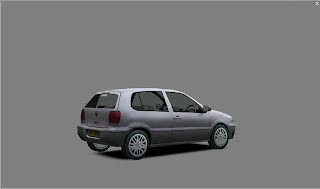Here is a driving simulator that I worked on for Nottingham University. I contributed both towards the visuals and the implementation of AI cars. Visuals were generated in 3DS Max by using Lidar data for geo-specific placement of objects such as buildings and signs.
I implemented all of the road traffic behaviour in the simulator, this was achieved by researching every junction on the route and applying the appropriate rules and behaviours in Presagis AI Implant
The driving route can be found here.
The simulator is projected 360 degrees which allows for fully panoramic view. Users sit inside a used Mini Cooper with the steering wheel, pedals, gearbox and dashboard controls all connected to the simulator software. The car is also placed on a motion rig, this allows for force feedback which responds accordingly to the car's movements as the simulation is running, allowing for a realistic experience of motion.





















































